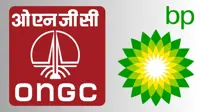GDP projected to grow at 5.4-5.9% in 2014-15
09 Jul 2014
Economic Survey 2013-14 has projected India's gross domestic product (GDP) growth in the range of 5.4 – 5.9 per cent (at constant prices), although there are downside risks to the economy arising from a poor monsoon, the external environment and the poor investment climate.
 GDP growth slowed to below 5 per cent for two consecutive years, ie, 2012-13 and 2013-14. The combination of domestic structural constraints, inflationary pressures, particularly food inflation and uncertainty in the global economy, has affected growth and posed challenges for macroeconomic stability.
GDP growth slowed to below 5 per cent for two consecutive years, ie, 2012-13 and 2013-14. The combination of domestic structural constraints, inflationary pressures, particularly food inflation and uncertainty in the global economy, has affected growth and posed challenges for macroeconomic stability.
The growth slowdown was broad-based, affecting in particular the industrial sector. Aided by favourable monsoons, the agricultural and allied sector,grew at 4.7 per cent in 2013-14.
In 2013-14, industry grew at 0.4 per cent. The key reasons for poor performance have been contraction in mining activities and deceleration in manufacturing output.
Manufacturing and mining sector GDP declined by 0.7 per cent and 1.4 per cent, respectively in 2013-14.
The underlying cause of the poor performance of these two sectors has been considerable deceleration in investment, particularly by the private corporate sector during 2011-12 and 2012-13.
In infrastructure, delays in regulatory approvals, problems in land acquisition and rehabilitation, environmental clearances and time overruns in the implementation of projects are matters of concern.
Consumer price inflation declined from 10.21 per cent during FY 2013-14 to about 9.49 per cent in 2013-14. However, food inflation remained stubbornly high during FY 2013-14. Contribution of the commodity sub-groups, 'fruits and vegetables', as well as 'egg, meat and fish' to the food inflation has been very high.
India's balance-of-payments position improved in 2013-14 with current account deficit (CAD) at $32.4 billion (1.7 per cent of GDP) as against $88.2 billion (4.7 per cent of GDP) in 2012-13. India`s exports at $312.6 billion grew by a positive 4.1 per cent compared to the previous year's negative growth of 1.8 per cent.
Import growth decelerated from 0.3 per cent in 2012-13 to a negative (-) 8.3 per cent in 2013-14, owing to fall in non-oil imports by 12.8 per cent primarily due to restrictions on gold imports. Petroleum, oil and lubricant (POL) imports grew marginally by 0.7 per cent.
Services grew at 6.8 per cent in 2013-14.
The growth rate of the combined category of trade, hotels, and restaurants and transport, storage, and communications decelerated to 3.0 per cent while financing, insurance, real estate, and business services grew robustly at 12.9 per cent. Challenges to the external environment remain as the global environment remains uncertain.
Subsidy burden
In 2013-14, public finances faced serious challenges. With a shortfall in tax revenues and disinvestment receipts and higher than budgeted subsidies, interest and pension payments, fiscal consolidation was mainly achieved through a reduction in grants for creation of capital assets and capital expenditure.
An important factor in the increase in the centre's fiscal deficit after 2008-09 has been the sharp increase in subsidies from 1.42 per cent of GDP in 2007-08 to 2.56 per cent of GDP in 2012-13. For 2013-14 (RE) the subsidy bill is 2.26 per cent of GDP.
In the financial sector, leverage by infrastructure firms and deteriorating asset quality of the banking sector emerged as a major concerns. Gross NPAs of banks increased from 2.36 per cent of total credit advanced in March 2011 to 4.40 per cent of total credit advanced in December 2013, with infrastructure, iron and steel, textiles, aviation and mining emerging as the stressed sectors.
Reforming the financial sector would involve reducing financial repression through which the state usurps a large share of household financial savings, financial sector regulatory reform and changing the laws and regulations governing the flow of foreign capital into India.
The passage of the PFRDA Act, the shift of commodity futures trading into the ministry of finance and the first steps towards adoption of improved consumer protection and better regulatory practices proposed by the Financial Sector Legislative Reforms Commission were the milestones in financial sector reform in 2013-14.
Controlling inflation
The Survey identifies the need to address long run problems to improve the investment climate. It emphasizes the need for creating a framework for low and stable inflation, setting public finances on a sustainable path by tax and expenditure reform, and creating the legal and institutional framework for a well-functioning market economy.
It calls for legislative and administrative reform for building state capacity to allow businesses to operate in a stable environment and improve the ease of doing business.
The Survey calls for putting public finances on the sustainable path through fiscal correction, a new Fiscal Responsibility and Budget Management (FRBM) Act with teeth, better accounting practices, greater transparency and improved budgetary management. It argues that improvements on both tax and expenditure are needed to obtain high quality fiscal adjustment.
It calls for a tax regime that is simple, predictable and stable consisting of a single-rate goods and services tax (GST), fewer exemptions in direct taxes, and a transformation of tax administration.
Government expenditure reform should involve three elements: shifting subsidy programmes away from price subsidies to income support, a change in the focus of government spending towards provision of public goods, and a focus on outcomes through an improvement in systems of accountability.
For example, a focus on health and education outcomes, rather than inputs and expenditure must be a priority.
The Survey recommends that the government needs to move towards a low and stable inflation regime through fiscal consolidation, establishing a monetary policy framework, and creating a competitive national market for food. Initiation of reforms on these fronts should reduce inflation uncertainty and restore a stable business environment.
Further, lower inflationary expectations should increase domestic household financial saving and make resources available for investment, it said.
.webp)



.webp)


.webp)

























